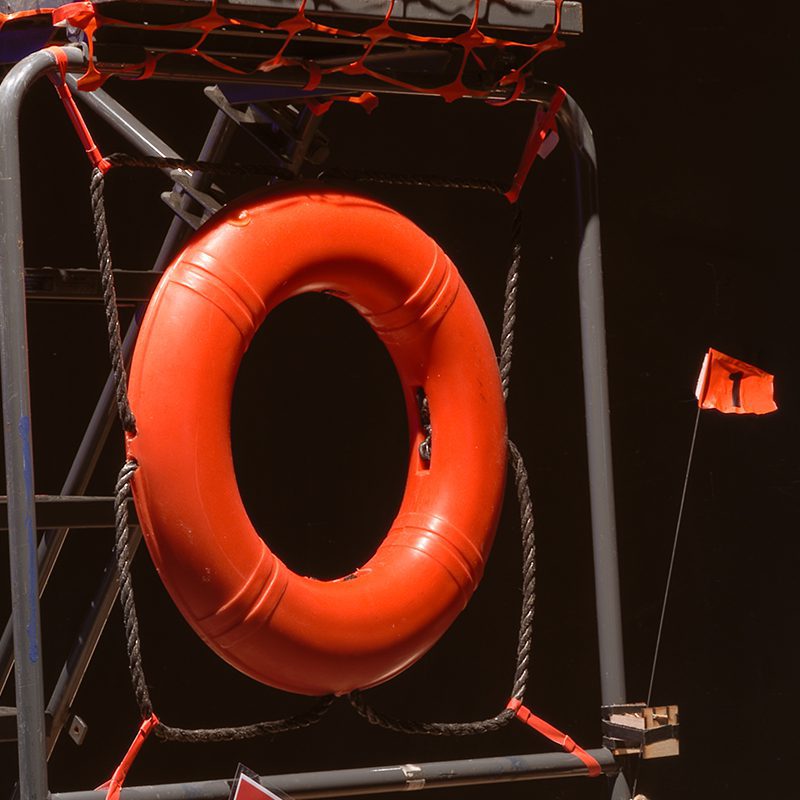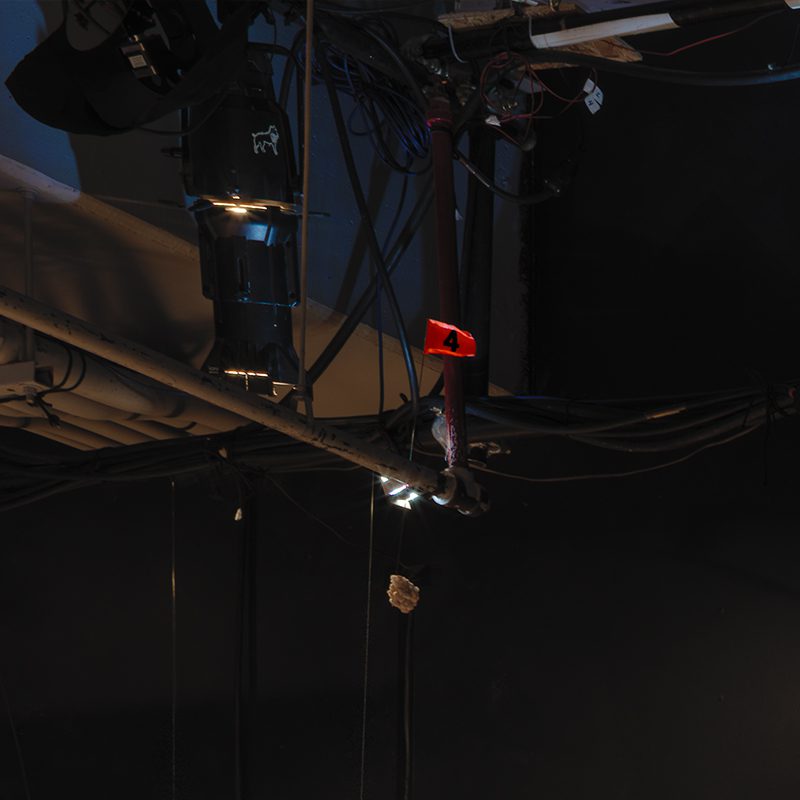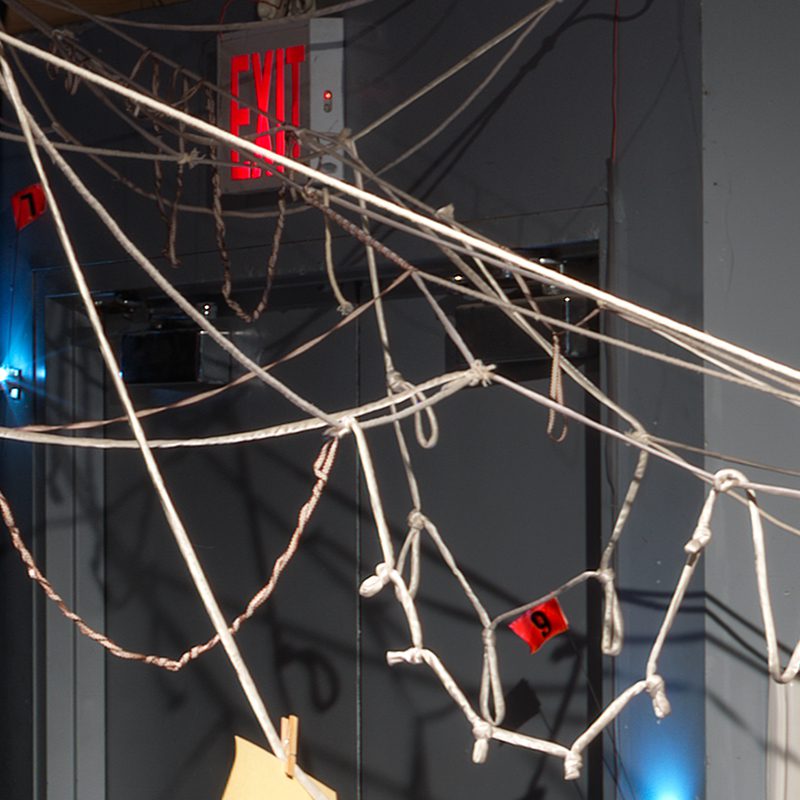Floating Studio for Dark Ecologies (FSDE) dreams of an ongoing and open library of citizen-driven field guides. The aim of these guides is to embrace the everythingness that—like it or not, pretty or not, dirty or not—constitutes the place where we are. We believe the first step to change requires an unblinkered intimacy with the present/presence of place. The work we have been doing on Newtown Creek in New York has, from the start, been conceived as a model for coming to know one’s “place” in the anthropogenic landscape.
A Field Guide to the Place Where You Are is an instantiation of that model, further abstracting the form of the experimental field guide. In its incarnation at 3LD Art and Technology Center in New York City (2017), the subjects of inquiry—the 3LD site, its infrastructure, and artworks in the interdisciplinary exhibition Works on Water—reflected both the specific collision of agents in one space, and also their global attachments to multiple other places and realities as experienced through their material natures.
A Field Guide to the Place Where You Are at 3LD was a sculptural installation and field guide that invites participants to investigate their material surroundings from atop a post-natural lifeguard stand (an industrial ladder). Orange numbered stake flags were placed throughout 3LD, and keyed to a laminated field guide accessible at the top of the ladder along with binoculars. The field guide wove its entries into a fluid geo-temporality: from the past of Greenwich Street (formerly Manhattan’s western shoreline), to the present linkage between the sprinkler system and upstate reservoirs, to the power grid and its potential for a renewables-fueled future.
Press
The Inaugural Triennial on New York’s Waterways Drops Anchor, Allison Meier, Hyperallergic
Sample Entries in A Field Guide to the Place Where You Are:

(LADDER) – present (right now)
It is June, 2017. You’re standing on this ladder: McMaster Carr model 8188T87. Holding you 7’8” up in the air, and you can feel safe; the powder-coated steel can bear the load (up to 450 lbs). Its powder coat is probably thermoplastic, a whole genus of materials that can be shaped, molded, and even made particulate with enough heat. This genus also fills the Atlantic trash vortex, spinning on the Sargasso Sea like

(FIRE SPRINKLER) – present (right now)
The water in the Ashokan Reservoir, 100 miles north of here. Flowing downhill, like blood through your leg. Through an aqueduct, through a UV light treatment plant, city pipes, a nearby main, up into this building, into this sprinkler. This sprinkler is the valve on an upstate watershed, waiting to burst into action. At the turn of the 16th century, as Giovanni da Verrazzano was making the first European contact in New York Harbor, Leonardo da Vinci constructed a glass model of the human heart. As you gaze at this glass bulb in 2017, you gaze at the key to the water, the valve, its pressure. Should it shatter, then like a cut artery, it will not sprinkle,

(HANDMADE BOAT) – past (1300)
It will spray. Up over the sides of the Massicot, this paper boat, built for the open waters. Mare Liberum, Hugo Grotius’ legal tract from 1609 claiming the seas are open to all. Mare Liberum, written for the benefit of the Dutch East India Company. Who sent Henry Hudson west that same year, giving them their claim to New Netherlands. You’re in this paper boat, that sailed the Hudson River. You’re in a dugout canoe, shaped from a tulip tree by Leni Lenape hands, crossing the same river, Shatemuc, in the year 1300. Shatemuc, “river that flows both ways”. Like a tide,

(EXIT SIGN) – present (2017)
In the water. At Standing Rock. In Mawah, NJ. You’re there, with the Sioux, the Ramapough Luunape, the Water Protectors, in 2017. Coalitions of tribal communities and U.S. citizens have joined together in the water, a symbolic gesture towards the oil conglomerates trying to bisect watersheds, primary sources of human health, with steel pipelines. These “black snakes” seep toxins time and again. “LEAVE,” you and the Water Protectors say, voices bright and hard like an EXIT sign made, per New York regulations, from steel.

(PORCH PAINT) – future (2525)
Extinction. The year is 2525, and humans have decimated most sources of life. Facing your own demise, you’ve decided to start anew on the Moon. This blue paint, a relic of more prosperous times, is made with titanium oxide pigment. On the Moon, you’ll be mining Ilmenite, the mineral source of that pigment, but not for aesthetics. You’ll use it to make iron, and titanium, for construction. And you’ll use it to extract oxygen, not an abundant resource up there. When you look back, and see the blue planet abandoned in the sky, will you miss the water? The water slowly rising, overtaking

(80 GREENWICH ST) – past (1600s)
One network laid atop another, wastewater atop wetland. It’s 1660, and you and your fellow Dutch occupy this island where two rivers meet the sea, an island covered in streams, creeks, marshes. You hear the cannons at Fort Amsterdam to the south. You’re on the shore of the North River. You dip your fingers into the wet sand, you picture grasses, a park, streets, skyscrapers: the land that hasn’t been made land. You’re standing in this spot.


